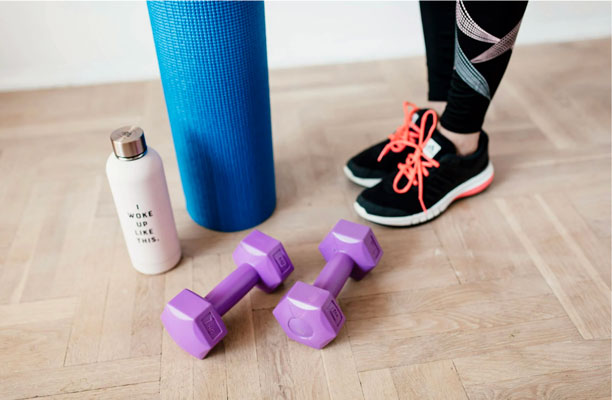Healing from an injury is often a complicated process that requires a delicate balance between rest and activity. Rest is crucial for effective recovery, allowing the body to repair damaged tissue and regain strength. Complete inactivity can hinder recovery and lead to further complications, such as muscle atrophy or stiffness. Striking the right balance can be challenging, but understanding the healing process and incorporating appropriate strategies can make all the difference. This article provides insights on how to effectively balance rest and activity during injury recovery.
Understanding the Healing Process
The first step in balancing rest and activity is to understand the body’s healing process. When an injury occurs, the body goes through several stages of healing, which include inflammation, tissue formation, and remodeling. The inflammatory phase often lasts for several days, during which rest is essential to minimize swelling and pain. Following this, the tissue formation phase occurs, where new tissue develops, requiring a gradual return to movement to foster flexibility and strength.
Recognizing these stages allows individuals to tailor their activity levels appropriately. It’s important to consult healthcare professionals, such as physiotherapists or doctors, who can provide a structured plan based on the nature of the injury. Understanding when to rest and when to begin gentle exercises can significantly enhance recovery outcomes.
The Role of Rest in Recovery
Rest plays a fundamental role in recovery because it allows the body to allocate resources for repairing and strengthening damaged tissues. Without adequate rest, the healing process may be prolonged, and the risk of aggravating the injury increases. Individuals should prioritize sleep and downtime, as these contribute to healing by promoting cellular repair and reducing inflammation.
In addition to general rest, active rest can be utilized. This involves engaging in light activities that do not exacerbate the injury but encourage circulation and mobility. Activities like gentle stretching, walking, and range-of-motion exercises fall under this category. Incorporating these movements can help avoid the negative effects of complete inactivity, such as stiffness, while still protecting the injury.
Gradually Introducing Activity
Once the initial rest phase has been completed and with the guidance of a healthcare professional, the next step is to gradually introduce activity. This process should be slow and methodical, focusing on low-impact exercises that align with the specific injury. These activities can help restore strength and flexibility without placing undue strain on the healing tissues.
Simple movements, such as swimming or cycling, can often be beneficial, as they allow for the use of major muscle groups while minimizing impact on joints. As strength and confidence grow, one can incrementally add more challenging activities. It remains vital to listen to the body and avoid pushing too hard too soon, as this can lead to setbacks.
The Importance of Listening to Your Body
Listening to one’s body is an essential aspect of healing and balancing activities. It is not uncommon for individuals to feel eager to return to normal routines, but ignoring signals of pain or discomfort can result in further injury. Monitoring how the body reacts to increased activity can help determine the appropriateness of specific exercises.
Keeping a journal of recovery can be useful. Note progress, setbacks, and how different activities are tolerated. This data can assist both individuals and healthcare professionals in adjusting recovery plans as needed. By being attuned to their bodies, individuals can make informed decisions about when to push forward and when to rest.
Social Support and Motivation
Engaging with others can play a significant role in the healing process. Friends, family, or support groups can provide motivation and encouragement. Sharing experiences can foster camaraderie, making the recovery journey less isolating. Some individuals may find it helpful to connect with professionals, including Injury Attorneys in Bethlehem, who can offer legal advice relevant to their situation while they focus on healing. Participating in group activities, such as rehabilitation classes or community sports, can serve as both a social outlet and a way to gradually reintegrate into active life.
The motivation to recover can be amplified within a supportive community, making the healing journey more manageable. Cultivating these connections often leads to improved emotional well-being and a stronger sense of purpose during recovery.
Nutritional Considerations for Healing
Nutrition significantly impacts the healing process. The body requires various nutrients to repair tissues effectively; thus, a balanced diet that includes plenty of proteins, vitamins, and minerals is essential. Foods rich in omega-3 fatty acids, lean proteins, vitamins C and D, and magnesium support inflammation reduction and tissue repair.
Hydration plays an important role; sufficient fluid intake can enhance circulation and promote the healing of injuries. It may be beneficial to consult a registered dietitian who specializes in recovery to develop an eating plan that supports healing goals while maintaining energy levels for the gradual return to activity.
Maintaining Mental Well-being
The psychological aspect of recovery must not be overlooked. Injuries can lead to feelings of frustration, anxiety, or depression, especially if they hinder normal activities. Maintaining mental well-being is crucial for a successful recovery, as a positive mindset can facilitate healing.
During recovery, engage in activities that promote relaxation and mental health, such as mindfulness practices, meditation, or gentle yoga. These practices ease the mind and can positively influence physical rehabilitation by enhancing one’s overall outlook and readiness to engage with physical activity once cleared to do so.
Realistic Goal Setting
Setting achievable goals can enhance motivation throughout the recovery process. Establish short-term and long-term objectives that focus on both physical milestones and emotional well-being. Celebrating small achievements will encourage and reinforce a positive attitude towards the healing journey.
Goals should be specific, measurable, and, importantly, flexible. As recovery moves forward, individuals may need to reassess goals to ensure they remain aligned with ongoing progress and feedback from health professionals. This dynamic approach allows for adjustments based on real-time recovery progress.

Balancing rest and activity during injury healing is an essential skill that demands attention to various aspects of recovery. By understanding the healing process, prioritizing rest while gradually introducing activity, and focusing on nutrition, mental well-being, and social support, individuals can enhance their recovery outcomes. Personalizing strategies to suit individual needs will empower those healing from injuries, enabling them to resume their daily lives with renewed strength and resilience.









